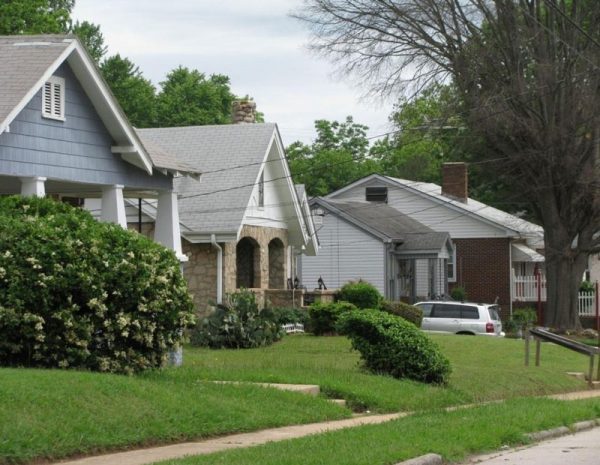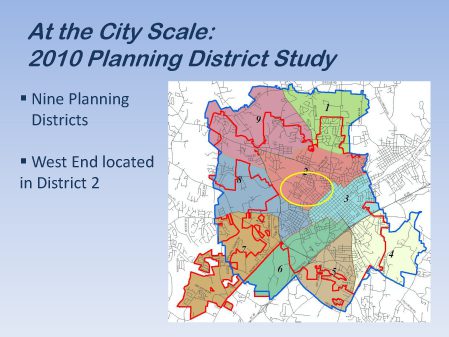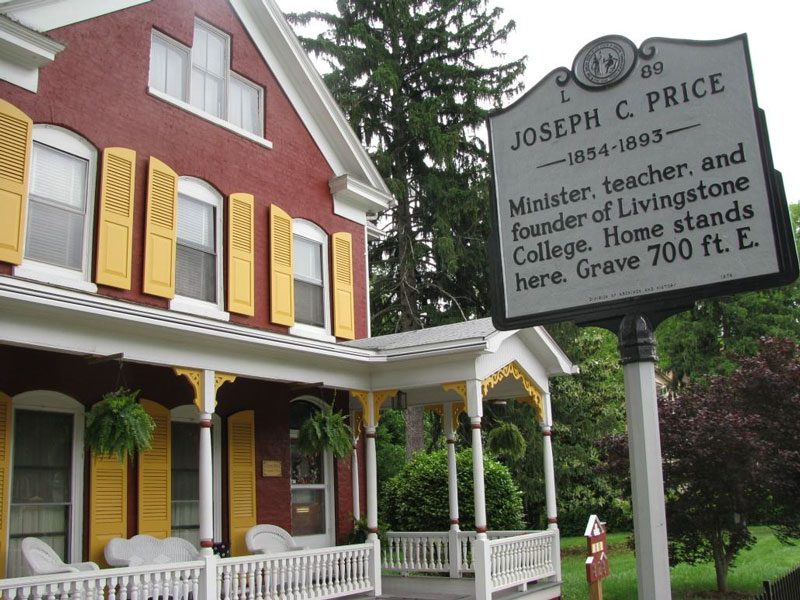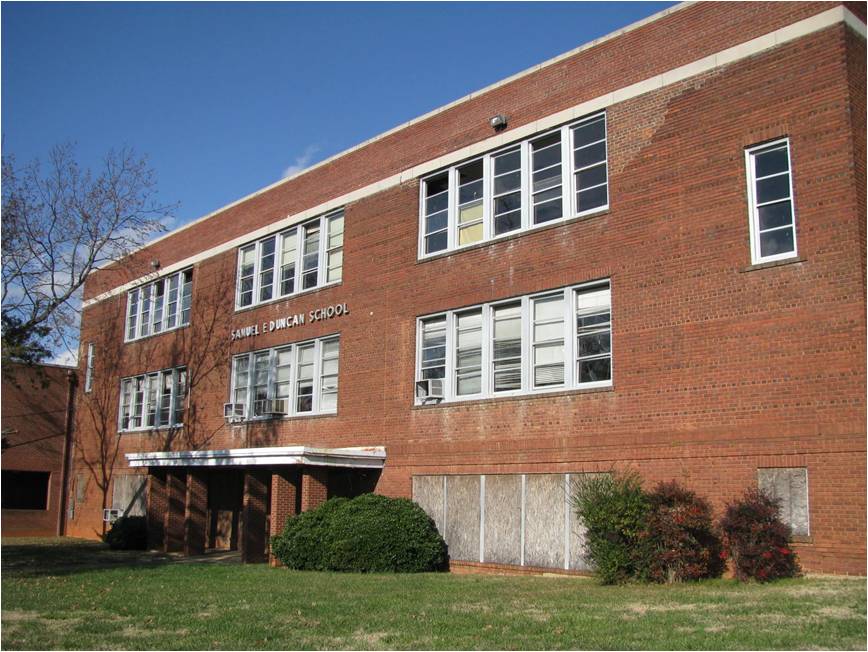Salisbury works to improve its West End

Salisbury is one of the first 17 recipients of the new HUD “Choice Neighborhoods” Planning Grants. The program is part of a new approach by the U.S. Department of Housing and Urban Development that is replacing its HOPE VI projects. In addition, Salisbury has been chosen for a case study by the International City/County Management Association into how the program is applied in small and medium-sized cities. The project will focus on the 1950s-era Civic Park apartments in the West End neighborhood.
HOPE VI had been the U.S. Department of Housing and Urban Development’s flagship program for redeveloping public housing complexes into mixed-income neighborhoods. By 2010, more than $6 billion in federal money had been allocated to HOPE VI projects. But since 1992, when HOPE VI was launched, little had changed about the program while communities, especially urban ones, experienced dramatic demographic, economic and cultural transformations.
Enter the 2009 White House’s Neighborhood Revitalization Initiative, a partnership among a variety of national heavyweight organizations, including HUD, the Department of Education, the Department of Justice, the Department of Health and Human Services, and the Department of Treasury.
This video is part of an interview conducted earlier this summer by institute director Jeff Michael with HUD Secretary Shaun Donovan. In this segment of the interview the secretary discusses the Sustainable Communities and Choice Neighborhoods programs at HUD. Click here for more information and for links to the full interview.
One of the initiative’s main programs is Choice Neighborhoods, which replaces HOPE VI as the go-to, project-based public housing program. These Choice Neighborhood grants come in two forms: Planning Grants to develop a comprehensive neighborhood Transformation Plan, and Implementation Grants to execute the transformation plan.
Critics of HOPE VI have pointed to what they perceive as the program’s failures, particularly a lack of evidence that mixed-income redevelopment improves the lives of public housing residents. HOPE VI grants concentrated on redeveloping public housing complexes without also targeting improvements for the surrounding community. Critics have insisted this approach is not sufficient in America’s inner cities, where disadvantage is so ingrained that merely redeveloping a housing complex does little to improve the lives of their residents or those nearby.
Salisbury received $170,000 as one of 17 grants awarded in the first round of Choice Neighborhoods Planning Grants. Salisbury’s grant funds the creation of their Transformation Plan, being developed by a team headed by the Housing Authority of the City of Salisbury and City of Salisbury. The plan’s focus is the revitalization of the Civic Park Apartments, a 72-unit public housing complex built between 1952 and 1953, and the West End neighborhood, both of which need physical and social interventions.
 “The transformation of the West End has begun,” says Joe Morris, the Salisbury planning director. “The neighborhood residents and larger community are rallying around the idea of a holistic neighborhood revitalization that addresses all aspects of community life. Salisbury is a city that routinely takes advantage of opportunities that come along. The Choice Neighborhoods program is a perfect example of a transformative opportunity that will pay dividends to our community for many years.”
“The transformation of the West End has begun,” says Joe Morris, the Salisbury planning director. “The neighborhood residents and larger community are rallying around the idea of a holistic neighborhood revitalization that addresses all aspects of community life. Salisbury is a city that routinely takes advantage of opportunities that come along. The Choice Neighborhoods program is a perfect example of a transformative opportunity that will pay dividends to our community for many years.”
The grant to Salisbury is especially significant because, as the smallest of the initial 17 grantees (30 total planning grants have been awarded since 2010), $170,000 has the potential to make a far bigger impact there than in say, Boston or Atlanta. Also significant is that through Salisbury’s award HUD has committed to focus public housing improvement funds not just in large cities, as was typical of HOPE VI grants, but in smaller urban areas as well.
Because of Salisbury’s smaller size, setting up partnerships and getting community participation has been easier. Community meetings to solicit information from residents about what they think the community needs have had regular and consistent attendance, some with as many as 100 residents present.
The Duncan/Monroe Street School, a historically African-American schoolhouse, is being rehabilitated for use as an anchor institution in the revitalized West End neighborhood. It will house programs for early childhood education, medical and dental satellite facilities and classrooms for educational workshops for residents, among other uses. Nearly universal agreement among residents about the value of Monroe Street School has guided the Transformation Plan by building support for the overall project to revitalize the West End neighborhood – a consensus that may not be as easy to achieve in larger cities.
What are the unique challenges Salisbury faces that may put it at a disadvantage compared to big cities? One of the biggest has been the housing authority’s capacity to undertake a planning effort of this magnitude. In the past, the housing authority hadn’t been involved with a redevelopment of this size, and Choice Neighborhoods calls for a level of community-wide planning that the authority had little experience with. This has required the city to play a larger role in the planning process than may be typical in larger cities with more housing authority staff and resources.
“Being a small agency, with less than 30 employees, we are challenged internally with a shortage of manpower, experience, and capacity,” says housing authority Executive Director Sam Foust. “This has required us to seek professional support from architects, engineers, designers and others who have provided in-kind services and support to the planning process. Additionally, the City of Salisbury, as a co-applicant, has provided the capacity, insight, and grant-writing experience needed for a successful application. By being forced to seek help and support from outside of our agency, it has brought together many agencies and individuals, which has produced a plan that is broad and encompasses the views and opinions of many.”
So what’s next for this Choice Neighborhood? In April Salisbury submitted a Choice Neighborhoods Implementation Grant application for $18 million to enable the Transformation Plan to be implemented. In addition to the $18 million, more than $11 million has been committed for the effort from agencies such as Salisbury Community Development Corp., Habitat for Humanity, Purpose Built Communities, Livingstone College and the Robertson Foundation. Last month HUD awarded almost $100,000 to the International City/County Management Association (ICMA) to include Salisbury as a case study in their analysis of Choice Neighborhoods Planning grantees in small- and medium-sized cities. And work is still in progress on the Transformation Plan, which Salisbury intends to complete by June 2013.
“Our next step will be to do everything,” says Morris. “A sense of urgency has been created, the West End Neighborhood is engaged, and their values are what matter most. The key partners are stepping up to provide services and financial resources. Our challenge is to move forward, organizing and incrementally addressing the expectations and aspirations of the neighborhood residents. The possibilities are unlimited. I have no doubt the West End will become a neighborhood of choice.”
Sara Gleave wrote this article while a graduate student working at the UNC Charlotte Urban Institute in 2010-2014.
Sara Gleave